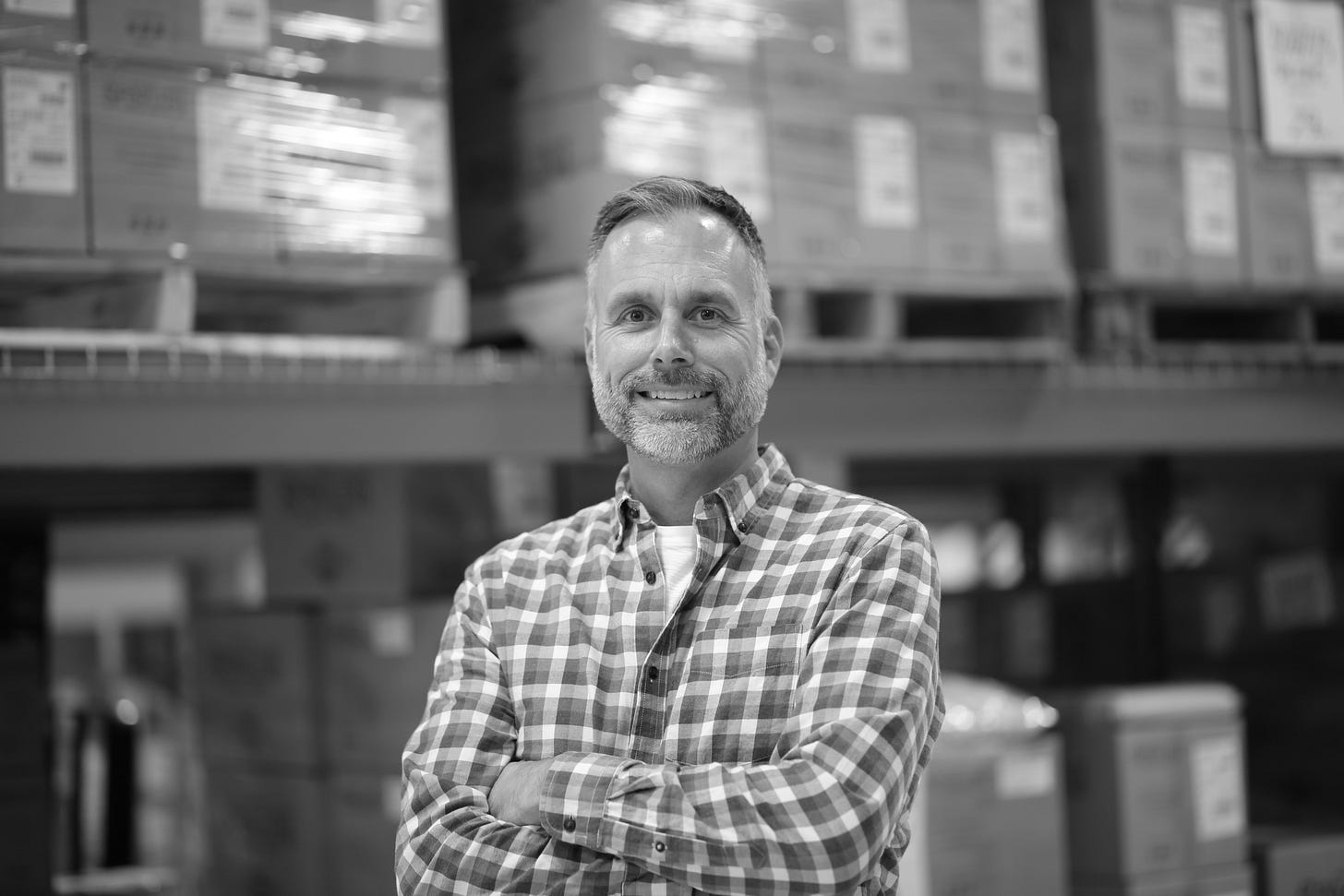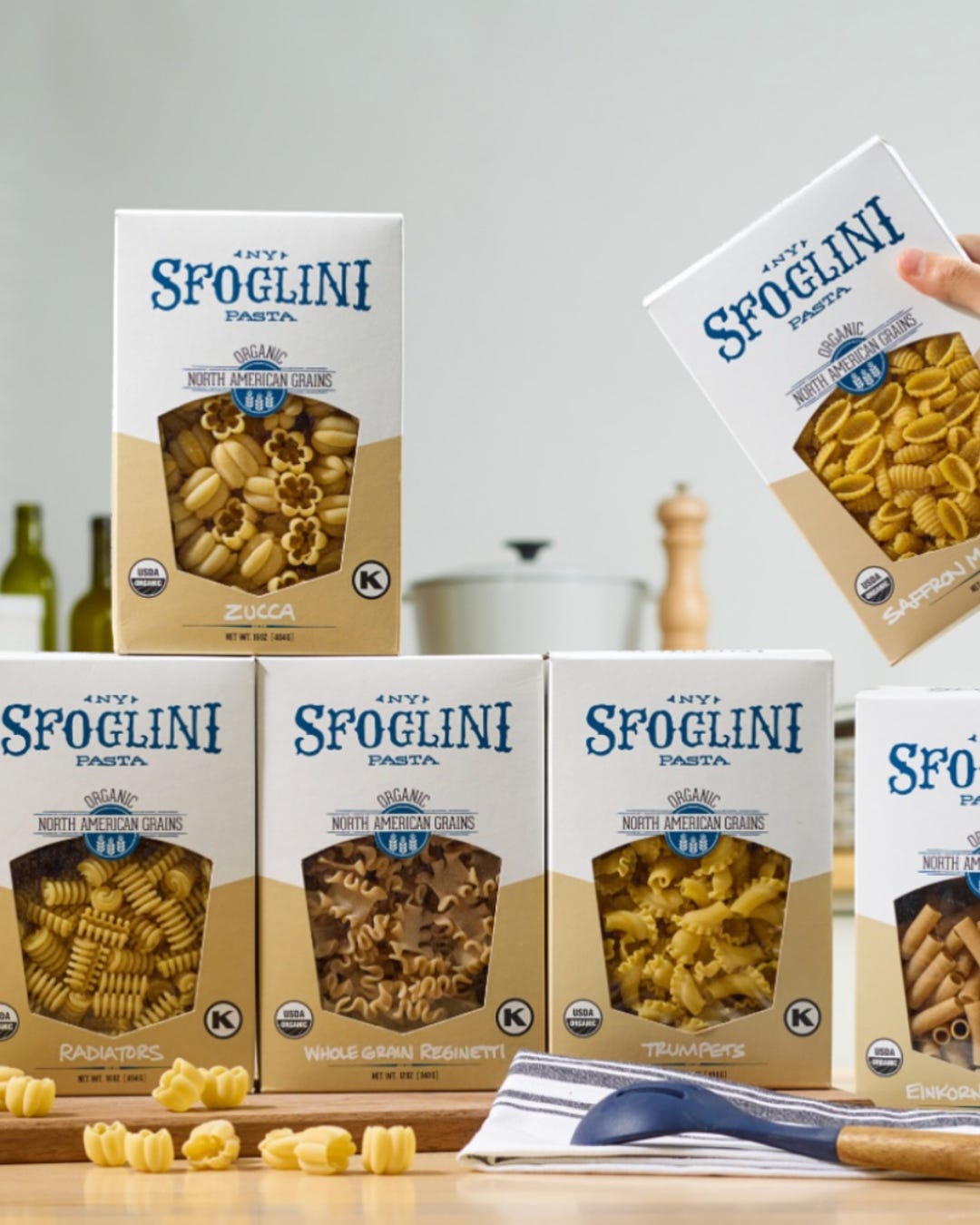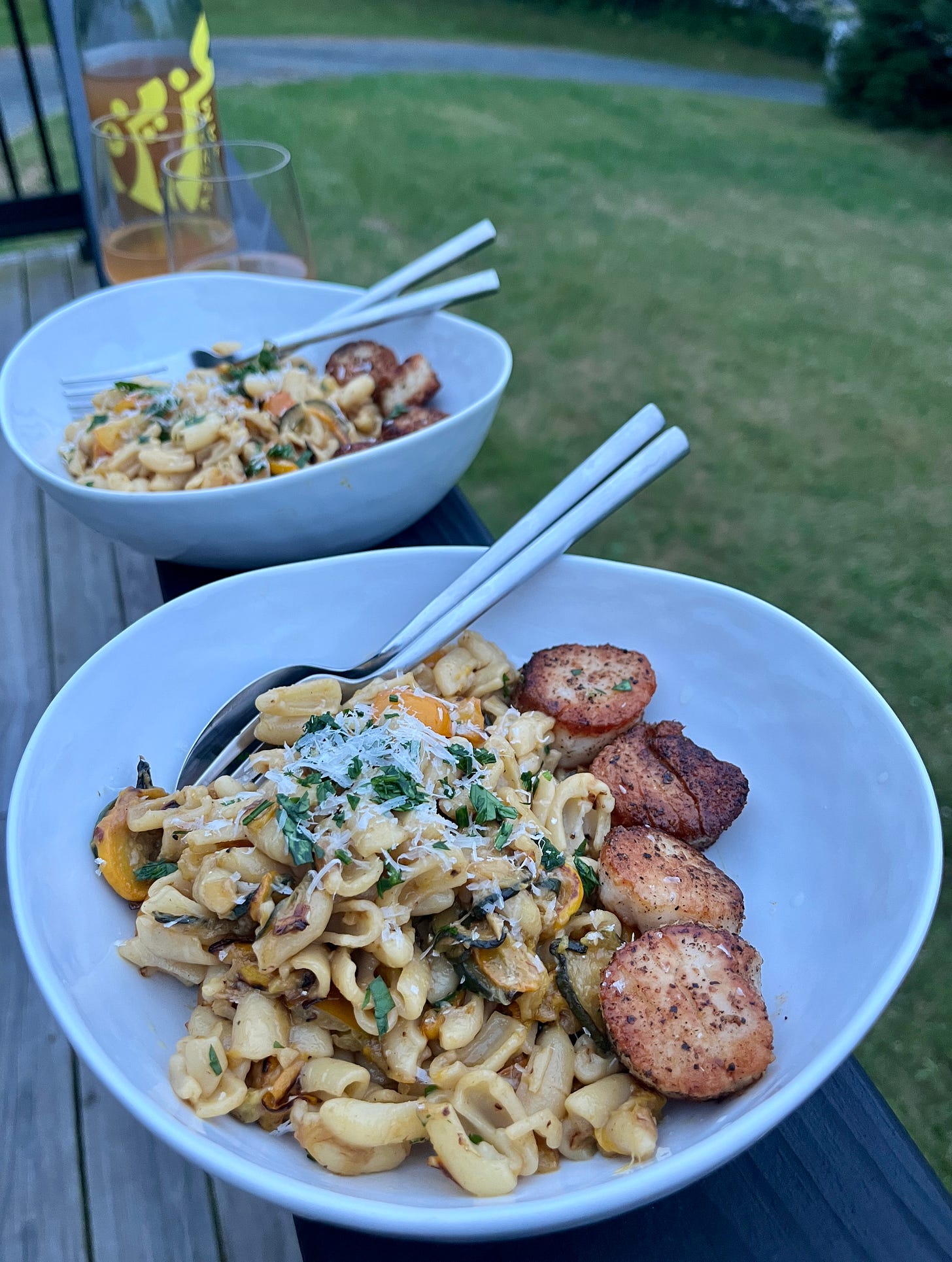Scott Ketchum obsesses over pasta shapes
The Sfoglini co-founder on developing new pasta shapes, sourcing wheat, and more.
If you enjoyed this issue, head to the bottom to like or comment so others can find it. Thank you!
Scott Ketchum is the co-founder of Sfoglini, an artisanal pasta company based in Coxsackie, New York. Founded in 2012, Sfoglini upholds the time-honored craft of Italian pasta making by using traditional bronze cut dies and a slow-drying process. Their pastas are used making durum semolina wheat and they also source a variety of heirloom New York grains, working to develop new shapes and innovate on old ones. In short, Scott spends a lot of time thinking about how your pasta sauce is going to taste with Sfoglini’s noodles. I’ve used Sfoglini’s pasta for a long time and it’s *very* good and they definitely deserve a spot in your pantry.
We chatted about how he got into the pasta making business, developing new shapes, and sourcing the wheats used in their pastas.
Brianna Plaza: You started your career as a graphic designer. How did you get into the food space?
Scott Ketchum: I worked about 17 years as a designer in cities from San Francisco to New York City, specializing in a lot of different things. Toward the end of that career, I was getting a little tired of sitting in conference rooms all day, discussing design but not really doing it anymore.
I realized that I’ve always had an entrepreneurial spirit and I wanted to try something new. A friend of mine, Steve Gonzalez, was a chef and I was helping him with some identity work for a restaurant idea he had. We started working together in 2012 and during some of the research, we learned that there was not really a store-bought pasta that was on par with the Italian brands that was made in US. All the pasta companies from New York had disappeared and there was a rich history there. We thought there was a really good opportunity to make a premium quality pasta based out of New York City.
At that time, you could really only buy your standard shapes. We worked to create something unique, offering shapes that hold sauce better, are more visually appealing, and could really deliver on a better meal experience. We even ventured into flavored pastas, working with farmers to use their bumper crops to make pastas from things like nettles and ramps. We started out selling at the farmers’ markets and selling to restaurants directly. All of these unique things were gaining attention in the press, so it helped us grow each year. I would walk around half the week to go to stores to drop samples off and try and get new customers.
Brianna Plaza: Talk to me about shape development. How was a long noodle the next logical step for the brand?
Scott Ketchum: A lot of the shapes we launched with we still sell today. We use an artisanal approach to our pastas using bronze dyes, and that gives the pasta a nice rough textured surface. We slow dry over a 10-hour period, which helps produce a better quality product by preserving flavor and nutrients. These techniques lead to a better meal experience.
We wanted to offer shapes that, first of all, there was a good use for. They would work for different types of recipes and in general, hold sauce better and deliver better bites. There are so many pasta shapes that exist, but at that time in 2012, a lot of companies had stopped making them. We started with shapes that we thought that people would be attracted to, and over the years we would add new ones here and there. Then, we would make our more popular shapes in different wheat variations from whole grain to rye, or even ancient grains like emmer or einkorn.
We moved out of Brooklyn in 2018 because we had grown out of our space. We moved to this huge 40,000 square foot warehouse and production facility in Coxsackie, New York and we started working on our long shape development. Short cuts of pasta make up about 50% of all pasta sales, so we were only selling to half the marketplace. We started with a bucatini but our equipment was just not suited to do it on a mass scale. We would do them in small batches and sell them on the site.
Jumping ahead to 2021, we partnered with a podcast called The Sporkful and launched a a shape called cascatelli, which is the first new shape in 60, 70 years (it’s hard to pinpoint the exact date of all of these creations). That took us a step further into creating something brand new, and we’ve continued to work with them to launch new shapes.
But in the last few years, we worked on finding a producer that could help us with long shapes. These current long pastas are the first ones not made in our facility. We worked with a partner using the same wheats, bronze dyes, and process that we do, so it’s more of a joint venture. Otherwise, I was going to have to buy another million dollar pasta line that I just didn’t have the ability to do. It’s quite a different process to make longer cuts, keep them straight, and package them so they don’t break.
Brianna Plaza: Do you have other longer shapes coming down the pipeline or are you sticking with these two?
Scott Ketchum: These two are a good starting point for us. When we first made bucatini, it was very popular, so our customers were happy to see that come back. The bigoli was something we wanted to try because spaghetti is one of the top-selling shapes in the world, but we wanted ours to be a little more unique. Bigoli is a little bit thicker and about four times the surface area of the average spaghetti. It has the ability to hold more sauce with that expanded surface area. There’s a lot of limitation with log pastas and what you can do, especially when it comes to packaging. We’re trying to develop two more, hopefully by the holidays. But we haven’t narrowed down exactly what they’re going to be yet.
Brianna Plaza: How do you decide what grains you want to use?
Scott Ketchum: We work with a mill in New York called Farmer Ground Flour and a lot of our whole wheat, rye, and einkorn comes through them. They work with farms in New York State and the surrounding states. They’ve been great partners since we started and helped us with a lot of experimentation. We still use those whole wheats today, and they’ve been growing along side us. We’ve never had any supply chains with them.
All pasta’s made with durum semolina wheat, which you can only get in certain regions of the world where it’s suited to grow. We were buying all of our wheat from Canada and North Dakota to be as local as possible, but in the last few years, sourcing from there has become difficult for organic wheat. The call for non-organic enriched wheat from that area has just been so heavy, so many producers are starting to make less and less organic.
We could see this becoming a big issue, so we did a big study with our audience recently and we asked what they loved about the pasta. We actually found out many of them didn't like that we used the North American wheat and they preferred Italian wheat pastas, which was a big surprise to us.
Since we were already using organic wheat, I don't think you could necessarily taste the difference if we switched. Plus, a lot of people have a perception of eating tons of pasta in Italy and not feeling bloated and gross afterward. They think the quality of the wheat coming from Italy is just better. And the quality is great there, there’s no denying that. But in my opinion, it's primarily that it doesn't have the additives that a lot of the US wheat does. So when we use organic, I feel like we were getting those same kinds of results. But people still have this perception that the wheat from Italy would be better for them. And that's what we found in that research. Since we were having sourcing issues, we started working directly with a mill in Italy to get all our Italian durum wheat, and we're now starting to use that in all of our pastas.
Brianna Plaza: How will tariffs change that?
Scott Ketchum: I did start to get a 10% European Union tariff on my last three deliveries, which I was expecting. I’d heard rumors of it going up or down, but nothing concrete. So I've been planning for that for a while. I actually stockpiled quite a bit of wheat earlier this year, just so I could go a few months and see what happened with the tariffs. But I'm pretty much planning on them staying here for a while and I'm going to have to absorb that price. I'm already a premium priced product and I can't really make it more expensive.







Great article!!! Can you buy the pasta on line?